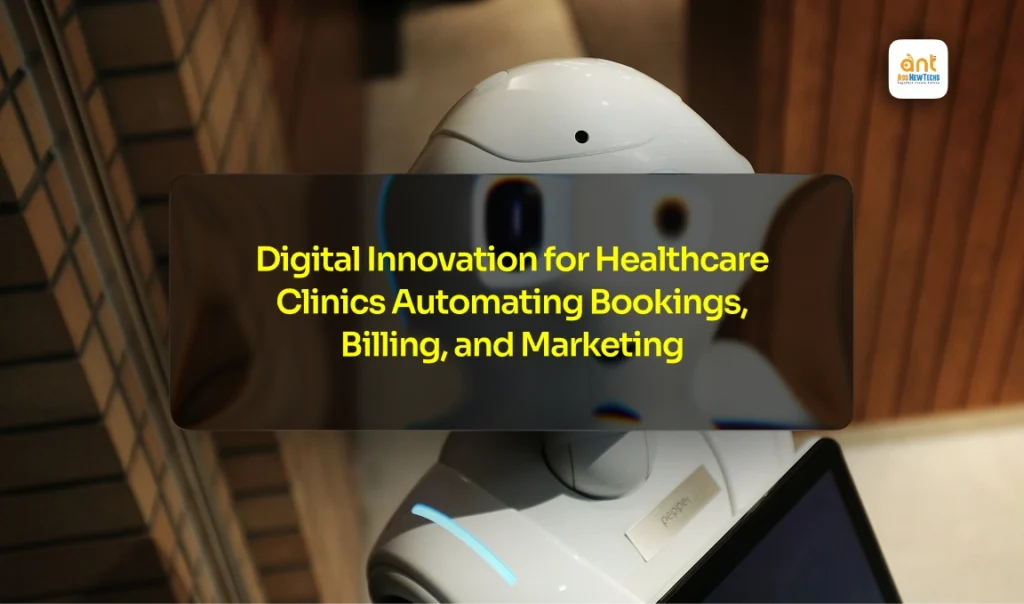5 Ways AWS Cloud and AI Solutions Can Future-Proof Your SMB
In an increasingly digital business landscape, small and medium businesses (SMBs) in Australia face unprecedented challenges: rising customer expectations, growing competition, and the constant pressure to innovate. Traditional IT infrastructure often cannot keep pace with these demands, leaving SMBs at risk of inefficiencies, missed opportunities, and slower growth. Cloud computing and artificial intelligence (AI) are no longer optional-they are critical enablers of business transformation. Amazon Web Services (AWS), the world’s leading cloud platform, offers scalable, secure, and innovative solutions that enable SMBs to automate operations, gain actionable insights, and scale confidently. However, adopting AWS can feel overwhelming without guidance. Aus NewTechs bridges this gap, helping Australian SMBs adopt, implement, and optimize AWS cloud and AI solutions, including cutting-edge Agentic AI capabilities, to unlock measurable business results. In this blog, we’ll explore five actionable strategies SMBs can use to leverage AWS cloud and AI solutions to future-proof their business. Scale Quickly and Cost-Effectively with AWS Cloud Infrastructure Many SMBs struggle with traditional on-premise IT infrastructure. Scaling servers, storage, or applications often requires significant capital investment, ongoing maintenance, and skilled IT staff. AWS solves these challenges by providing flexible, on-demand cloud infrastructure. Benefits for SMBs: Elastic scalability: Increase or decrease compute and storage resources instantly as your business needs change. Cost-efficiency: Pay only for the resources you use, avoiding upfront hardware costs. Global reliability: AWS operates multiple Availability Zones across regions, ensuring high uptime and disaster recovery capabilities. Rapid deployment: Deploy new applications, updates, or services in hours instead of weeks. Actionable Implementation: Start small by migrating non-critical applications such as document management, email, or internal collaboration platforms to AWS. This reduces risk and allows your team to gain familiarity with the cloud environment before handling core business systems. Relevant AWS Tools: Amazon EC2 – scalable virtual servers for your workloads Amazon S3 – secure, cost-effective cloud storage AWS Lambda – serverless compute for event-driven tasks Case Example: A mid-sized e-commerce business in Sydney reduced IT overhead by 30% within six months by migrating its product catalog, website hosting, and internal apps to AWS, allowing the team to focus on growth and customer engagement instead of server maintenance. Automate Operations Using AI and Machine Learning Repetitive, time-consuming tasks drain SMB resources. AWS AI and machine learning (ML) tools help businesses automate workflows, optimize decision-making, and predict trends. Benefits for SMBs: Increased productivity: Automate routine tasks such as customer support, report generation, and inventory tracking. Better decision-making: Use AI to analyze data and generate actionable insights. Smarter customer engagement: Personalize marketing and communication at scale. Key AWS AI Services: Amazon SageMaker – build, train, and deploy ML models Amazon Bedrock – access foundation models for AI applications without managing infrastructure AWS Agentic AI – autonomous AI agents capable of reasoning, planning, and executing complex workflows Actionable Implementation: Identify repetitive tasks across your business. Examples: Generating weekly sales or financial reports Responding to routine customer inquiries Scheduling appointments or deliveries Use Amazon SageMaker to create custom ML models for predictions or automation. Deploy Agentic AI agents to handle multi-step workflows autonomously. Case Example: A professional services firm in Melbourne automated its client onboarding process using AWS AI tools, cutting manual data entry by 70% and enabling staff to focus on higher-value advisory tasks. Make Data-Driven Decisions with Cloud Analytics Data is an SMB’s most valuable asset-but only if it’s actionable. AWS provides powerful analytics and business intelligence tools to transform raw data into insights that inform strategic decisions. Benefits for SMBs: Centralize and consolidate data from multiple sources Identify sales trends, customer behavior, and operational inefficiencies Predict future demand and optimize inventory or staffing AWS Analytics Services: Amazon Redshift – scalable data warehousing Amazon Athena – serverless query service for analytics on S3 data AWS Glue – ETL (extract, transform, load) service for data integration Actionable Implementation: Aggregate sales, operations, and customer data into Amazon Redshift. Use Athena or Redshift to generate visual dashboards and actionable insights. Implement predictive analytics to plan inventory, marketing campaigns, or workforce allocation. Case Example: A retail chain in Brisbane leveraged AWS analytics to optimize inventory levels, reducing stockouts by 25% and improving sales forecasting accuracy. Ensure Security and Compliance While Reducing Risk Security is a top concern for SMBs adopting cloud solutions. AWS provides enterprise-grade security and compliance tools designed for businesses of all sizes. Benefits for SMBs: Protect sensitive customer and business data Ensure compliance with regulations such as GDPR and Australian Privacy Principles Monitor and respond to potential security threats proactively Key AWS Security Services: AWS Identity and Access Management (IAM) – control access and permissions AWS Shield – protection against DDoS attacks AWS Backup & CloudTrail – secure backups and auditing capabilities Actionable Implementation: Configure IAM roles to restrict access to sensitive systems. Enable AWS Shield and monitoring alerts for potential threats. Implement automated backups and recovery procedures. Case Example: A healthcare clinic in Sydney adopted AWS security protocols, ensuring HIPAA-aligned compliance while safeguarding patient records. This increased client trust and reduced IT risk. Deploy Industry-Specific Solutions for Maximum Impact Every SMB operates in a unique industry with distinct challenges. AWS enables customized solutions tailored to your business workflow. Industry AWS AI & Cloud Solutions Retail & E-Commerce Personalized marketing, demand forecasting, automated inventory management Logistics & Transportation Route optimization, fleet tracking, real-time operational dashboards Healthcare Appointment scheduling automation, patient data analytics, regulatory compliance Construction / Trades Project tracking dashboards, automated reporting, document management Professional Services CRM automation, intelligent document processing, workflow automation Actionable Implementation: Identify your critical business functions. Map AWS services that align with these workflows. Partner with a local expert like Aus NewTechs to implement, train, and optimize solutions for your SMB. Case Example: A logistics company in Melbourne implemented Agentic AI agents to manage delivery scheduling and customer notifications. This reduced manual intervention by 60% and improved on-time deliveries by 15%. How Aus NewTechs Supports SMBs in AWS Adoption Partnering with AWS is only part of the journey. Aus NewTechs provides local, hands-on support to ensure SMBs achieve real business outcomes: Business Assessment & Planning: Identify opportunities and align AWS services to your goals. Onboarding & Migration Support: Smooth migration with minimal disruption. Custom AI & Agentic AI Solutions: Tailored workflows and automation. Training & Change Management: Enable your team to use AWS tools effectively. Ongoing Optimization: Monitor usage, optimize costs, and scale operations efficiently. By combining AWS technology with Aus NewTechs’ local expertise, SMBs can future-proof their business with automation, insights, and scalable infrastructure. Conclusion The future of SMB growth in Australia depends on leveraging technology strategically. AWS cloud and AI solutions provide the tools to scale securely, automate intelligently, and gain actionable insights. But technology alone isn’t enough – practical implementation, industry alignment, and ongoing support are critical. Aus NewTechs enables Australian SMBs to adopt AWS solutions confidently, from cloud migration to AI-driven workflows and agentic automation. With the right guidance, SMBs can










